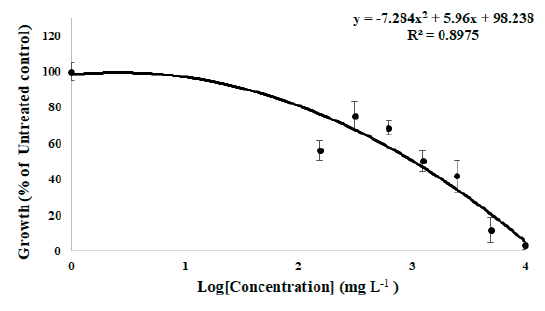Abstract
Goldenrod (
Figures & Tables

Fig. 1.Growth retardation curve of seedling fresh weight by treatment of root MeOH extract in vitro seed bioassay. The regression is y=-7.2484x -5.96x+98.238 and the calculated growth retardation 50% (GR50) value of MeOH extracts of root to is 1,034.78 mg L.


